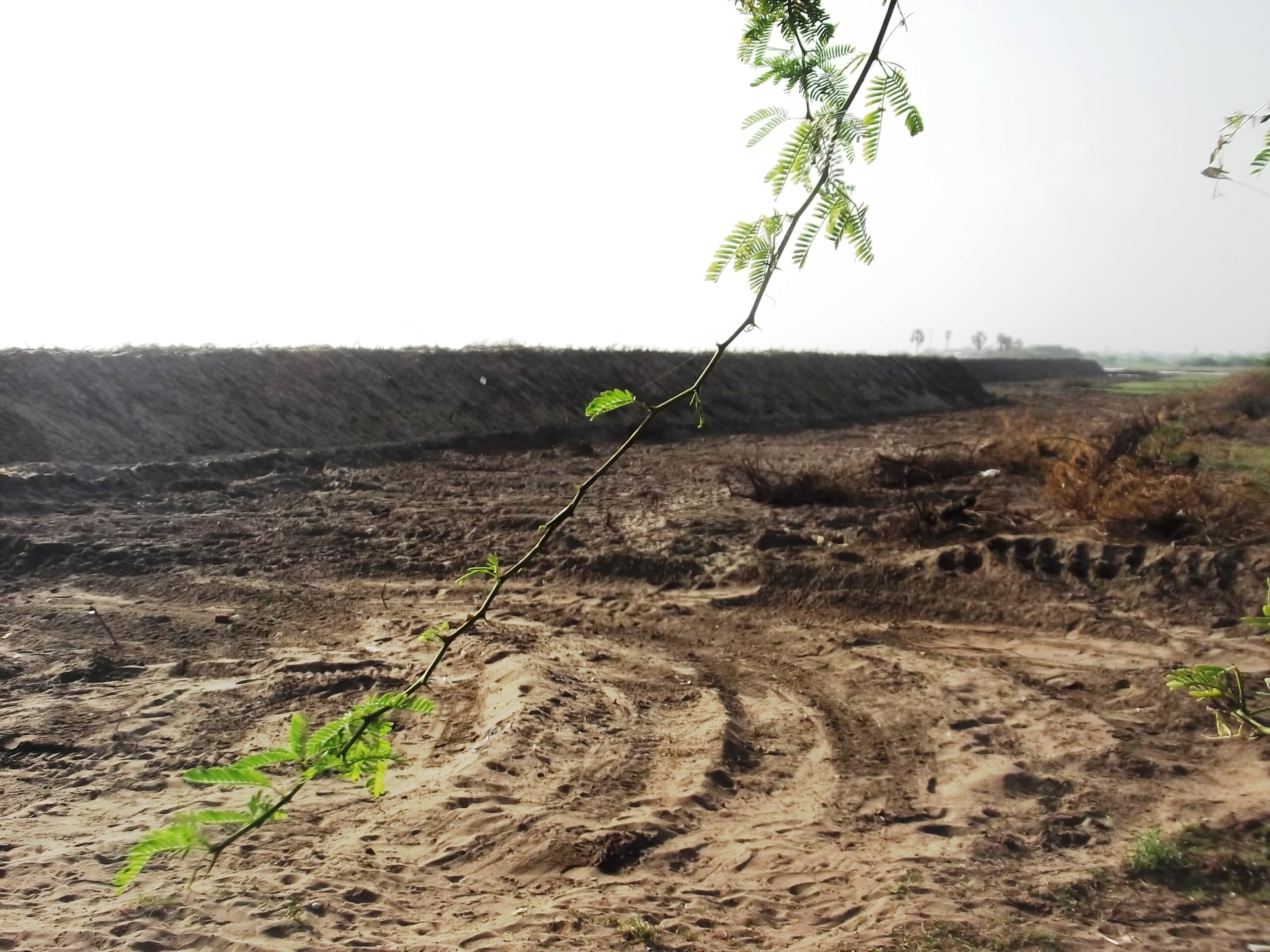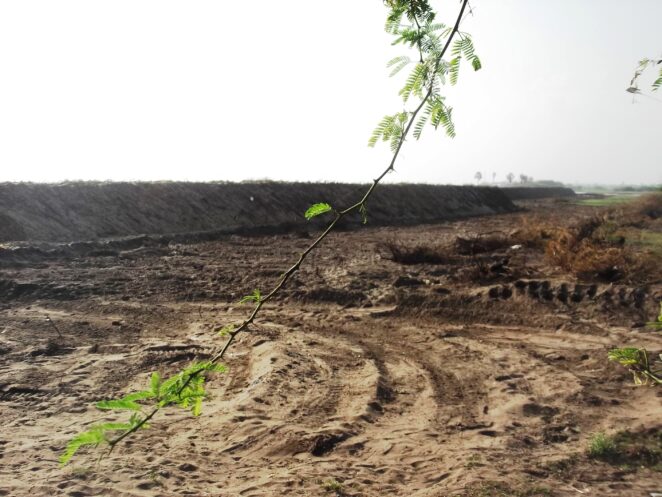Case-study /
Preventing flooding through a coastal bund – Protecting the livelihoods of the fishing community of Perumalpettai village, India


Perumalpettai’s coastal bund for flood protection
Located along the low-lying coastal area of the Bay of Bengal in Tamil Nadu, only 500 m from the coast, the village of Perumalpettai was destroyed by the tsunami in 2004 and re-built next to the old one. The village is still prone to flooding and has on a regular basis been experiencing storm surges. Increasing sea level aggravated the intensity of occurring floods. Many of the traditional village homes were abandoned after the tsunami, but around 438 fishing families still live in the village. The fishermen’s equipment is stored on the beachfront and thus very vulnerable towards heavy storms and flooding. With climate change the frequency and intensity of extreme weather events is expected to further increase in the area, putting the houses and livelihoods of the fisher families even more at risk.
Supported by the EU-financed AdaptCap project, the community built a coastal bund to shelter themselves, their homes and infrastructure from storms and sea water flooding. For a particularly high stability the 4 m high and 6 m wide bund was constructed of hard stiff clay, hard red earth and hard soil just behind the dunes. A vegetation cover prevents erosion. It protects the village and an overall number of 1,500 people over a total length of 900 m. Ground and surface water bodies are protected from subsequent salinisation. The community has already seen positive changes from this adaptation measure. The villagers expressed the wish that the vegetation cover on the bund should be increased and a boat yard needs to be planned along it. Key benefits are:
- Agricultural land protected from flooding: 25 acres of arable land protected from floods and salt water
- Families and fishermen protected from flood events: 60 families and a school building directly protected from floods.
Implementation costs
The overall costs of this adaptation measure – including a local vulnerability and needs assessment, capacity building measures in the community, technical support as well as material and labour costs – amounted to Rs. 669,400. Of these, Rs. 649,400 were borne by AdaptCap while the community contributed Rs. 20,000.
Operation & maintenance of the system
In order to remain operative in the long run, several parts of the system require regular operation and maintenance (O&M). Regular O&M activities include:
- Verifying the constructed bund is intact
- Implementing repair works on the bund
- Taking care of the bund vegetation cover though planting and watering
The community has handed over the responsibilities for and timing of O&M activities to the Village Development Committee (VDC), who ensures the constructed bund is not damaged. Together with the Panchayat, the community and VDC do repair works if required and water the vegetation cover. Local NGOs and the forest department carry out planting activities in rainy season. Practically all maintenance tasks can be implemented independently by the community. The average monthly O&M costs amount to Rs. 3,000. The local Task Force Committee collects a monthly contribution fee from all the beneficiaries in the village.
M&E of activities and benefits
A monitoring and evaluation (M&E) system was developed to regularly screen and assess the adaptation project’s sustainability and impact. Information is collected in four areas:
- Effectively achieved vulnerability reduction
- Acceptance by and technical feasibility for the community
- Cost for implementation and regular O&M
- Positive and negative side effects (i.e., environmental, social, economic)
Challenges and lessons learnt
- Ensure a strong buy-in by the community and local authorities for the adaptation measure to allow for an efficient and sustainable implementation.
- Obtain permission from relevant departments for the lifting of soil before coastal bund construction works begin.
- Verify the availability of soil by assessing the quantity of mud available in the proximity of 500 m of the construction site, otherwise costs increase.
- Ensure skilled labour is available close to the location.
- Combine the bund construction with the digging of a pond as additional adaptation measure, as sand from the pond can directly be used for the bond construction.
Project background and partners
The project “AdaptCap – Strengthening Adaptation Capacities and Minimizing Risks of Vulnerable Coastal Communities in India” financed by the European Commission has set out to strengthen the adaptation capacities of vulnerable coastal communities in Andhra Pradesh and Tamil Nadu (India) and minimize their climate change-related risks using an integrated approach.
The three-year initiative is implemented by the Indo-German Environment Partnership Programme of Deutsche Gesellschaft für Internationale Zusammenarbeit (GIZ-IGEP) in partnership with four Indian and international partners.
GIZ-IGEP is responsible for the overall implementation and project management.
AVVAI Village Welfare Society (AVVAI) supports the stakeholders in three cities and nine villages in Tamil Nadu as a local partner, providing training and implementation support in assessing adaptation needs and developing and carrying out adaptation measures.
Academy of Gandhian Studies (AGS) fulfills the same role in Andhra Pradesh.
adelphi contributed to developing technology solutions for the pilot projects and M&E frameworks, designing and implementing capacity building programmes and providing technical support for pilot project implementation.
ICLEI South Asia led the implementation of activities in the six urban areas targeted by AdaptCap.
